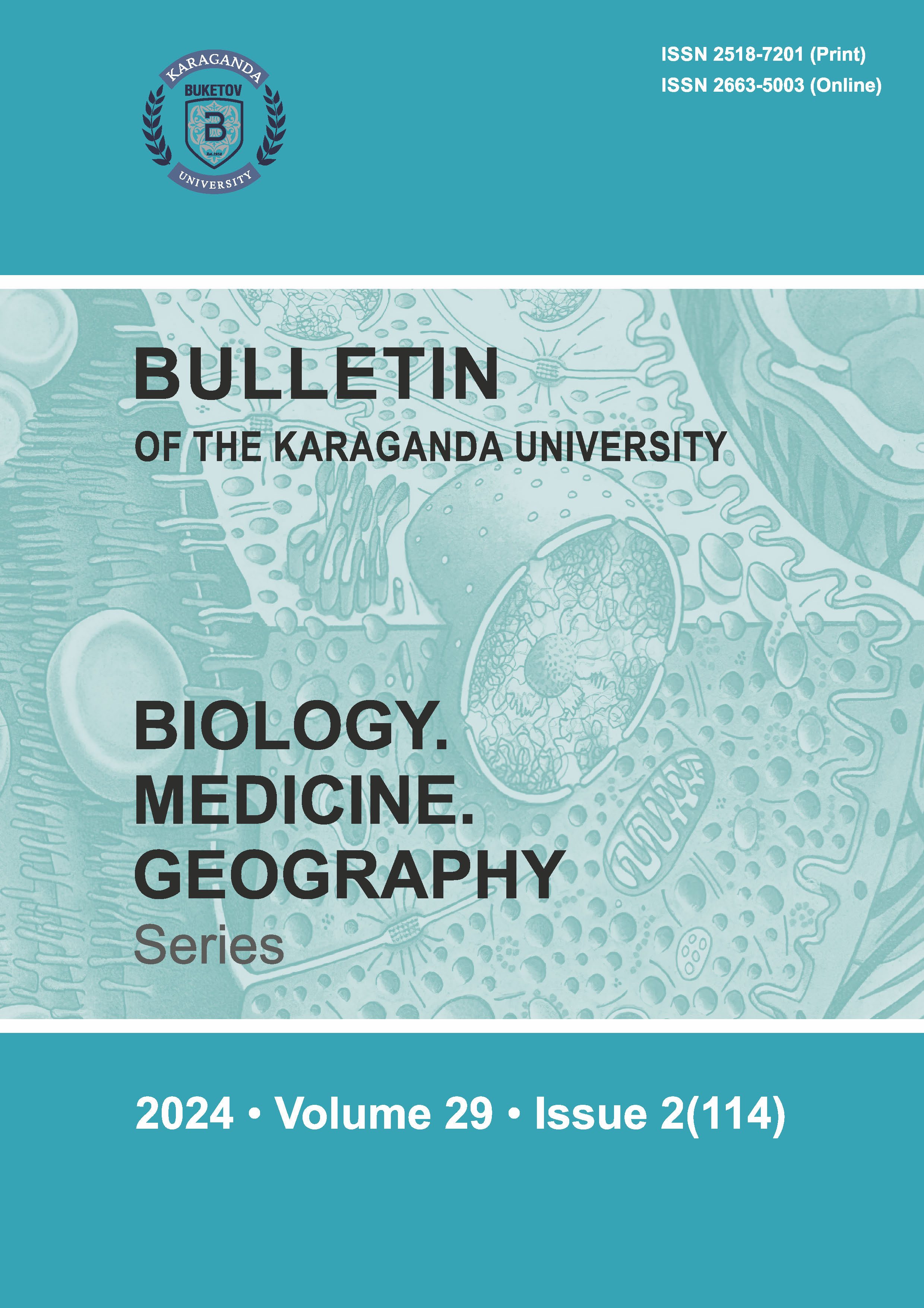Feeding of the caspian seal (Pusa caspica Gmelin, 1788) during haul out periods at the Kenderli rookery (Middle Caspian)
DOI:
https://doi.org/10.31489/2024bmg2/21-28Keywords:
Caspian Seal, fish, otolith, diet analysis, food habbits, Kendirli Haul-Out Site, feces, reconstruction of fish lengths.Abstract
The Kendirli Haul-Out Site of the Caspian Seal served as the sole haul-out location in the Central Caspian Sea. Consequently, data obtained regarding the seal's diet at this site holds significant importance for the study and conservation of the Caspian Seal population. This study analyzed the diet of the Caspian Seal based on fecal collections from the Kendirli Haul-Out Site spanning from 2015 to 2019. Given the Caspian Seal's endangered status, a vital in vivo method of coprological analysis was employed to assess its diet. Comparative analysis of the seal's diet was conducted across seasons and years, and fish lengths consumed by seals were determined using otoliths extracted from feces. The study revealed that the Caspian Seal's diet at the Kendirli Haul-Out Site comprises 11 fish species, including species of the Cyprinidae family and Benthophilus genus, along with unidentified species of gobies. It was observed that the seal's diet varies seasonally; during autumn, the primary food source consists of gobies, whereas in spring, Atherina caspia predominates the diet. Additionally, carp species, Clupeonella caspia, and Alosa braschnikowi are present in the spring diet but absent in the autumn diet. Reconstruction of fish length ranges for three fish species — Neogobius melanostomus affinis, N. pallasi, and Alosa braschnikowi — demonstrated that seals consume fish ranging from 30 to 260 mm in length.



